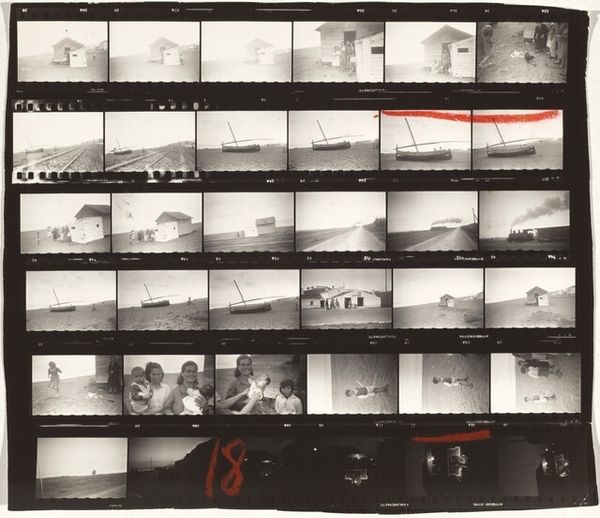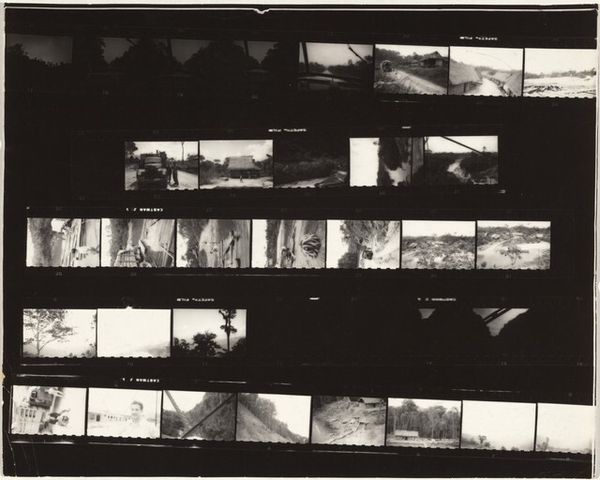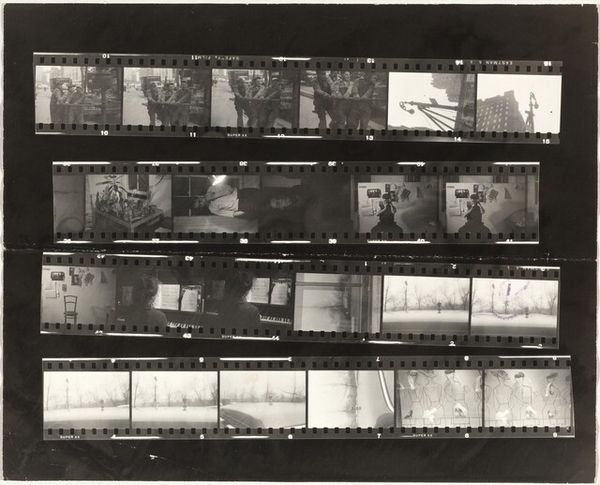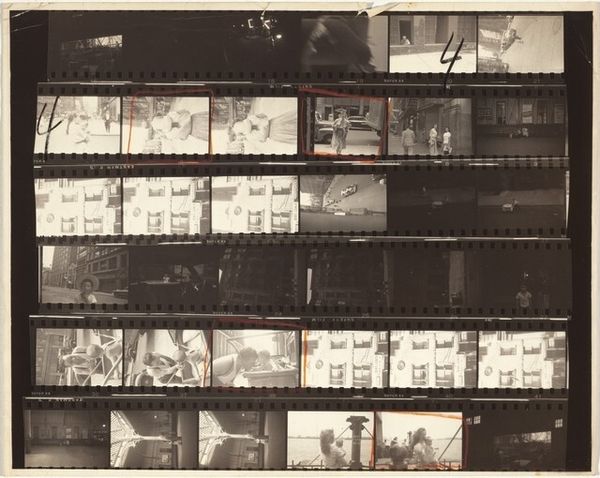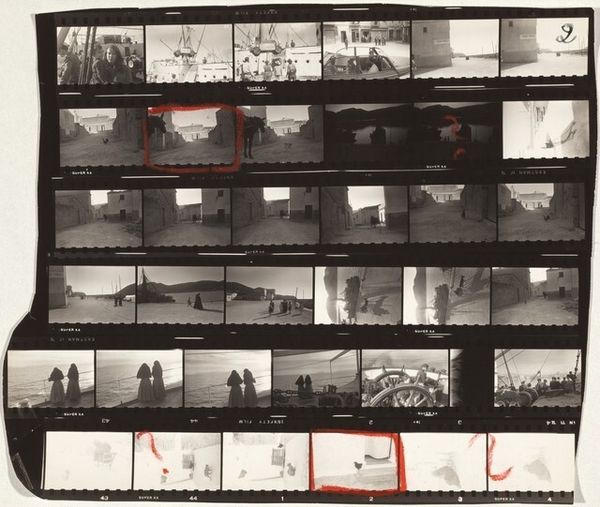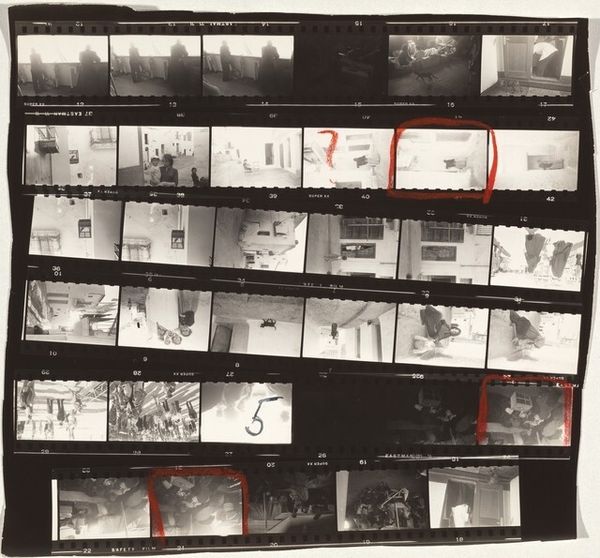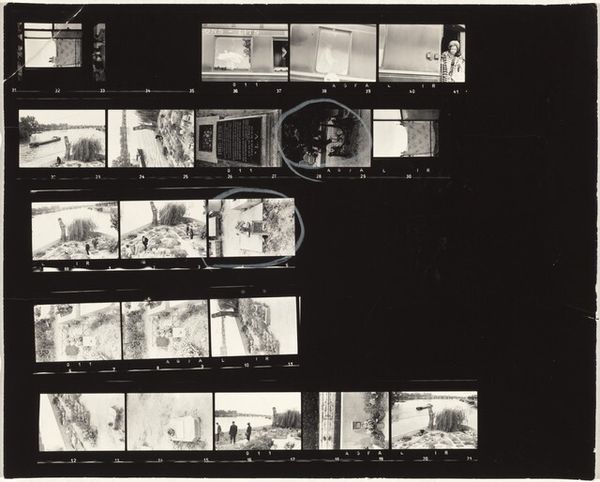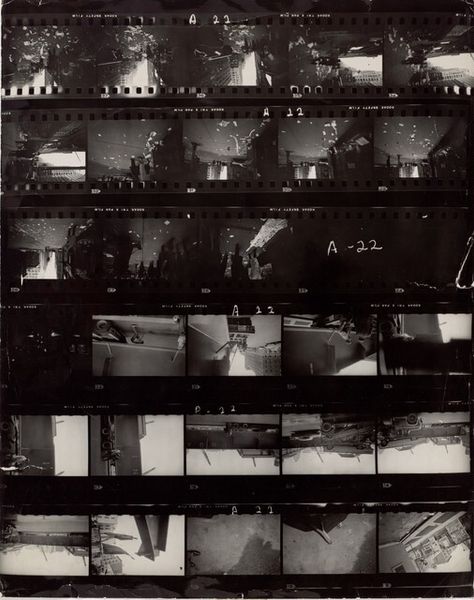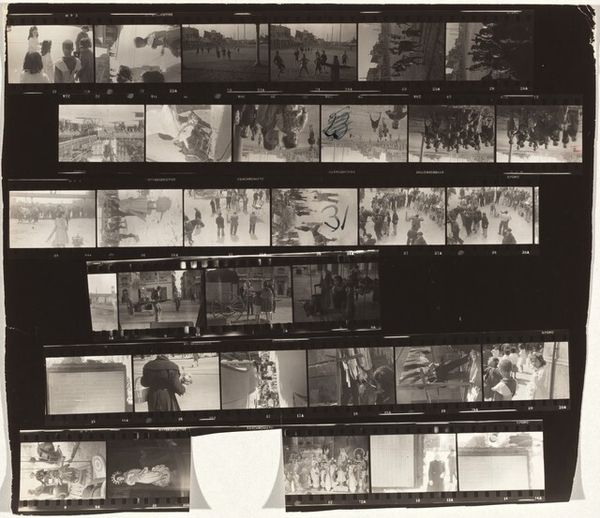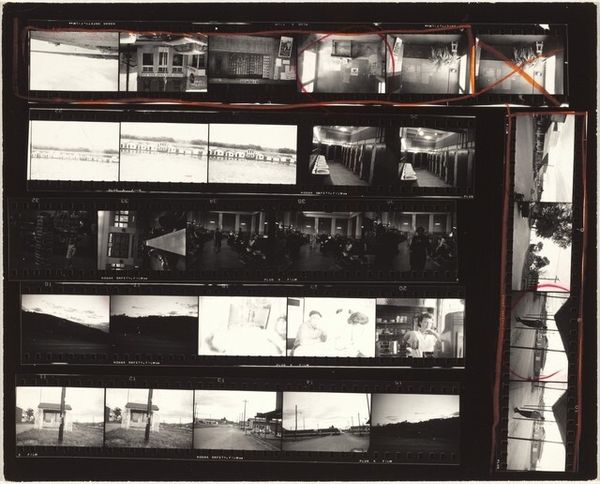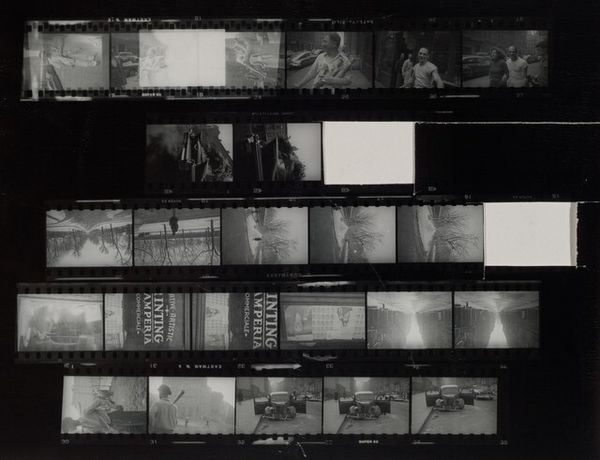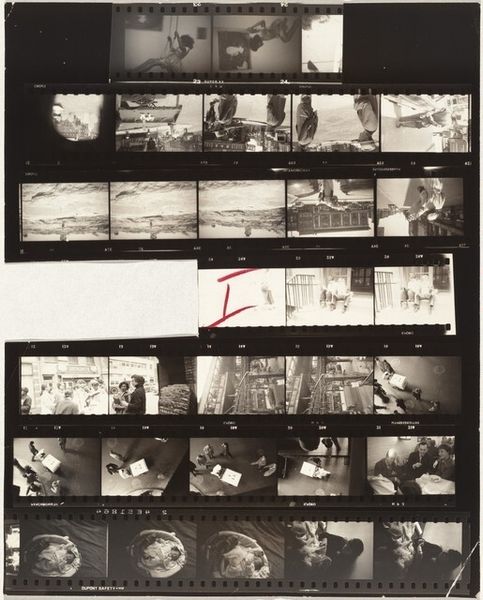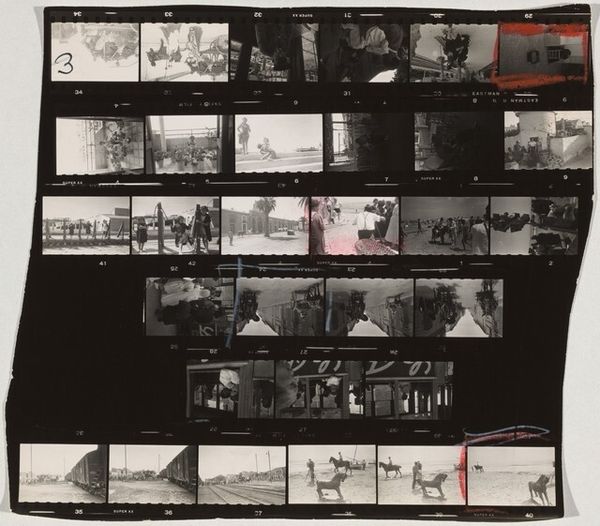
Dimensions: overall: 21.5 x 24 cm (8 7/16 x 9 7/16 in.)
Copyright: National Gallery of Art: CC0 1.0
Curator: Robert Frank’s "Valencia, Spain 17," a gelatin silver print from 1952, is a striking example of his early street photography. What’s your first reaction to this work, especially seeing it displayed here as a full contact sheet? Editor: Immediately, a feeling of captured, fleeting moments hits me. The greyscale and visible film grain almost lend it a timeless quality, but it's also…raw. I see childhood, industrial grit, candid innocence—all caught and framed with an urgency, almost as though Frank was desperately documenting this disappearing moment. Curator: That raw feeling you describe, I think, arises from Frank's decision to include the entire contact sheet. You're getting everything, failures included; an intimate peek into his process. Note the photographer's marks. The red pen circles choices, rejections; the handwritten "17" perhaps signifies sequence. What does that production choice say about accessibility and process? Editor: It feels like deconstruction, right? He's taking photography apart. Instead of a flawlessly finished piece, you get the human element of creation laid bare: missteps, the photographer figuring things out. Even in its literal, tangible process the physical 'labor' and marks of the photographer stand out against so much fine art polish. I feel like I'm shoulder-surfing, right there alongside Frank as he makes art of everyday. Curator: Exactly. Look at how these decisions create a narrative. The bottom frames feel more carefully selected. One shows kids staring, while others evoke their environment; perhaps this final image distills something crucial for Frank regarding Spain in this time, and by letting us see that entire thought process, the narrative gains strength through his working-class lens and choices in craft. Editor: Absolutely, especially considering the era. I mean, even just on the human level: these children—who are they? Where are they going? Their curious eyes tell more story than a posed formal portrait. I think you touched on something pivotal when referencing his eye for work, for capturing street scenes with kids kicking around dust bowls… Curator: What you mention connects, in fact, to much of his later and iconic work on Americana. Consider that both that project and these scenes of Spain in the fifties offer an invaluable snapshot of everyday society, emphasizing, though photographs are technically reproducible, that the process, materials, context all contribute to the value and meaning we place on certain photos. Editor: And perhaps this work underscores an important perspective in this context. As an artist it encourages an introspective understanding that a piece becomes more honest as a full spectrum experience. Like the layers of process on this photographic piece it's good for the audience to peek beyond a curated surface.
Comments
No comments
Be the first to comment and join the conversation on the ultimate creative platform.
